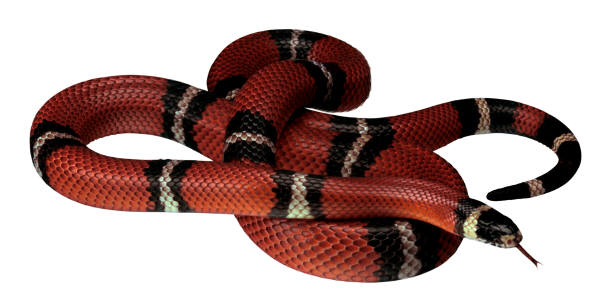Snake Tales
When I was about ten years old, I considered myself an expert on snakes. Despite my inner-city upbringing, I knew all I thought I needed to know. I knew they were reptiles, I knew they had no legs, they moved along the ground, they had fangs, and some were quite dangerous. I was determined to catch one, and though I lived in the city, our frequent visits to the homes of friends in more rural areas provided ample snake-hunting opportunities.
In all my studies, however, I somehow missed one very important lesson—how to catch a snake once I saw one in the wild. This very important piece of information would help the common snakes elude me for weeks, until a small, unsuspecting speckled band of a snake appeared before me as I sat on the bank of a creek in Pennsylvania. Aha! Easy prey, I thought, as I grabbed the retreating snake—by the tail. As most practiced rural children could tell you, you never grab a snake by the tail. It could swing its head around and bite you! True to its nature, before I even got to name it, my new pet used its rapier like fangs, winning its freedom and leaving me with two tiny puncture wounds on my finger. I dipped my finger into the cool running water of the creek, and watched my pet retreat into the brush with what C. S. Lewis would have called, “A look of idiotic satisfaction” on its face.
A few minutes later, I was showing my wounded finger proudly to my friends. One girl ran off to tell her father, who came back to check on my condition. This was copperhead country, and a snake bite was a potentially life-threatening incident. I knew this, of course, so when her father asked me about the snake, I denied everything. I had seen no snake, I had grabbed no snake, and I certainly had not been bitten by a snake! I was more terrified, you see, of the prospect of visiting a hospital, and being subjected to the snake bite cure...which was surely worse than the snake bite. I could not sleep that night, imagining my finger growing numb as toxin spread through my body...but of course, I survived.
I have since caught numerous snakes (3 or 4 at least...), and I have managed to avoid being bitten—by snakes. Of all the books I had read, I’m quite sure that at least one had information about how to catch snakes safely, but without the experience of actually capturing a snake, I could not be sure of how it was properly done. As I live on an island with no venomous snakes, I let my children catch them if they can find them, but I do like to inform them of the potential hazards of snake-catching in other areas.
Other snakes have their defenses, though. Pick up most common “harmless” snakes and they will likely eliminate their waste products quickly. The smell of the uric acid and feces is quite strong and unpleasant—I find it less tolerable than skunk scent. Still other snakes are just plain fast, slithering out of the way before you can catch them. And most snakes, even the venomous ones, are shy, and are more likely to run away than strike, unless cornered or provoked. Nevertheless, one should always exercise caution!
Snakes have long been reviled in literature and in history. We all know who took the form of a serpent in Genesis, but the bad reputation of the snake has not improved much since then. C. S. Lewis, inspired by biblical references to serpents, has a witch take the form of a serpent in The Silver Chair. In the Jungle Book, Kipling, no stranger to snakes, presents us with Kaa the constrictor, whose “strength lay in his hug,” and Nag, with his wife Nagina, both intent upon killing a small boy. In Greek mythology, the hideous gorgon Medusa sports a head covered with snakes instead of hair, and can turn a man to stone if he sees her. In Christian tradition, St. Patrick rids Ireland of pesky snakes. Sir Arthur Conan Doyle’s Holmes finds a snake is the culprit in “The Speckled Band.”
But snakes are not all bad, in reality, and in literature. An important part of a web of life in any ecosystem, snakes help control rodents and other vermin, like insects, and they provide food for predators. and more current literature reflects the benign nature of most snakes. Verdi, the hero of the story of a snake who does not want to grow up, is a likeable snake-character. Seymour Simon's Snakes are more interesting and beautiful than fear-inspiring, and field guides can offer information about the variety of snakes in the wild.
So, whether you fear them, keep them as pets, or eat them, snakes are fascinating creatures, and worthy of a closer look.
Need help identifying a snake in North America? Try this site:
http://www.pitt.edu/~mcs2/herp/SoNA.html
Read a paper on the myths about Australian snakes:
http://members.iinet.net.au/~bush/myth.html
If your child is considering a snake as a pet, here’s a website to browse:
http://www.ahc.umn.edu/rar/MNAALAS/Snakes.html
Learn about the King Cobra with National Geographic (pop-ups should be active):
http://www.nationalgeographic.com/kingcobra/index-n.html
Browse snake books and stories:
Jungle book interactive CD-Rom
Collection of folk tales about snakes...parents might wish to review individual stories for read-aloud:
